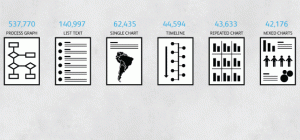Companies in general have a huge potential role to play in building a more inclusive society. There are many ways they can start doing it, and one important topic we have seen many companies working on is inclusive language.
Recently, Google announced a new “inclusive language” function that is intended to flash a warning if writers use words that may not be inclusive to all readers.
Have you ever thought about the power of the words as a tool to create a more inclusive environment?
According to a global survey conducted by Adobe with its clients, 61% of the respondents find inclusiveness and diversity in advertising important, moreover, 76% of job seekers view a diverse workforce as an important factor when evaluating companies and considering job offers, based on a Glassdoor survey.
As market data is showing us, this is not an optional practice for businesses anymore.
Let’s see how you can bring that into your brand and business with real, responsible and impactful actions, with some inspiration from Google, which is taking the lead on making an important step for a more inclusive language online.
Inclusive language for brands
We will soon get into the details of the new “inclusive language” function presented by Google. But before that we need to ask: what is inclusive language?
Inclusive language works to avoid stereotypes, bias, and discrimination against groups of people, and makes the receiver feel like they’re part of the target audience. So it passes through being sensitive to acknowledging diversity and showing respect to all people.
What is Google really doing to take the lead on the future of inclusion online?
If we were writing an article about a successful chairman that had to report to a policeman the worst fraud in the history of mankind, involving the landlord and the housewife, the new tool from Google would warn us and suggest alternatives to be more inclusive to all readers.
In the end, we will tell the same story about a successful chairperson that had to report to a police officer the worst fraud in the history of humankind, involving the property owner, a homemaker, but with a lot more responsibility and taking inclusive language into consideration.
This is the new function Google has rolled out that intends to steer its users away from what it deems to be politically incorrect words, like “landlord” and “mankind.”
The online word processor’s algorithm will alert them that their chosen terms “may not be inclusive to all readers” and then goes a step further by suggesting alternative, more inclusive words to use. As we saw in the example above, it might suggest “humankind” instead of the gendered “mankind,” or “police officer” instead of “policeman.”
While the new AI-powered language feature, called “assistive writing,” has been widely panned by critics (who have accused the search engine of being both intrusive and preachy), the fact is that these updates raise an important debate: the importance of inclusive language.
There is no doubt that this is a “one-way road” for companies; it is not an optional practice for businesses anymore. More than ever, this topic has to be discussed seriously and is being taken as a priority by companies.
You are not alone in this journey. There is a lot to learn and we want to be part of this journey with all brands and marketers who want to adopt inclusive language in their own communications.
Let’s see how we can get started.
How can marketers and brands add inclusive language in their communications?
There are different ways to incorporate more inclusive language into your business. These tips will help you keep inclusivity and diversity in mind when planning your communications.
1. Avoid unnecessarily gendered language
Gendered language is commonly understood as language that has a bias towards a particular gender and most of the cases using “man” as universal . As in the examples below there are many alternative ways to talk about any subject while keeping the radar on what is more appropriate.
Recommended:
- Hey folks/people, this last week was really busy for me.
- I would like to state that I am in complete agreement with what the chairperson said just now.
- The requested work takes 16 person-hours to complete.
- This is what your company needs to help all of humankind.
Not recommended:
- Hey guys, this last week was really busy for me.
- I would like to state that I am in complete agreement with what the chairman said just now.
- The requested work takes 16 man-hours to complete.
- This is what your company needs to help all of mankind.
2. Avoid ableist language
Ableism is the discrimination of and social prejudice against people with disabilities based on the belief that typical abilities are superior. Ableist language includes words or phrases such as crazy, insane, blind to, cripple, dumb, and others. It reveals unconscious bias on the belief that typical abilities are superior.
Choose alternative words depending on the context. Below you can see more examples about out-dated expressions and how to use respectful language:
3. Write diverse and inclusive examples and avoid bias
Use diverse names, genders, ages, and locations in examples. Keep the following advice in mind:
- Learn more about how to use gender-neutral language;
- To be able to be more sensitive and write for a global audience you should bring diverse examples about different cultural practices, figures of speech, and avoid being specific about only one culture;
- When writing about older adults, avoid terms and figures of speech such as the elderly, the aged, seniors, senior citizens, or 80 years young. Instead, use terms such as older adults or aging population;
- Don’t describe people without disabilities as normal or healthy. This contributes to othering and alienation of people with disabilities by implying that they are abnormal or sick. Use terms such as nondisabled person, sighted person, hearing person, person without disabilities, or neurotypical person;
- Avoid using expressions such as, “Master bedrooms”, “Blacklists” and “whitelists”, the idiom “sold down the river” in our everyday speech, they may evoke racist notations rooted in our history. We should rethink the use of those worlds.
Rethinking our language is also rethinking our society, our behaviors and practices. Language is alive and changes from time to time and our communication needs to be updated to:
- Communicate better;
- Reach all people and;
- Combat prejudice, social stigma and discrimination.
- Make sure this is a shared vision with all the teams in your company
Invest time in teaching and sharing this vision within the company, is an important step to have all the teams involved and part of this change.
- Train the leadership and the communication team on what that means and why it is so important
- Add an inclusive language guide into your brand guideline
- Review company communications
Wrap up
Words are powerful!
Marketers and everyone who leads communication needs to ensure everyone feels included and represented in brand messages. With that in mind we can start a positive movement to inspire and create a chain of companies truly interested in creating an inclusive and diverse environment.
- Learn with great examples from the market, such as Google’s new feature
- Strategically look into how you communicate today, and learn (via this article) tips on how to improve and make your communication reflect your business, culture and DNA
- Train and teach your team on how to be more responsible when communicating. The words you use and the language you incorporate into your messaging are also key to promoting a more equitable brand.
Read here to find out more about Rock Content’s commitment to diversity and impact globally.
Let’s be a force for good and inspire great actions.







